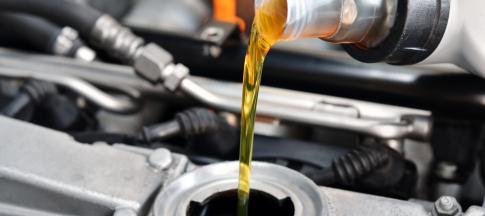
At Admiral we know taking your practical driving test can be daunting enough, but when you are asked scary questions about the ‘under the bonnet’ parts of your car, you could be left even more nervous. Well, not to worry! We are here to help with our easy to understand guide on the quick, but vital vehicle safety questions included in your test.
‘Show Me, Tell Me’ is what this part of the exam is known as, and it’s an important element of your test you’ll be expected to pass in order to pass your whole practical exam. The ‘Show Me’ questions are where you have to physically demonstrate to your instructor how you would carry out checks on the car. ‘Tell Me’ is where you explain how to carry out a test or check, but are not expected to physically do it.
You will only have to answer two of a possible 19 questions, and they are asked at the beginning of the test. They will be a mixture of one ‘Show Me’ question and one ‘Tell Me’ question. Only your driving instructor will know which of the questions you will be asked, so it’s best to try to learn and understand them all quite well. When you look at the Q&As, it may seem a lot to learn, but once you’ve got it down, you’ll wonder why you ever bothered worrying in the first place!
What are the 'Show Me' questions?
Let’s start by looking at the ‘Show Me’ questions, there are 9 of these:
1) Show me how to check that the brake lights are working on this vehicle
- Operate your brake pedal, make sure you make use of any reflections in windows or garage doors and if there aren’t any reflections, ask someone for help.
- Admiral's top tip: turn on the ignition if necessary, but make sure you don’t turn the car engine on.
2) Show me how you would check the indicators are working
- Apply your indicators or hazard warning lights, and get out of the car to check all the indicators are functioning.
- Admiral's top tip: turn on the ignition if necessary, but you don’t turn the car engine on
3) Show me how you should clean the windscreen when using the windscreen wipers and washing fluid
- Use the control for the windscreen wash and wipers.
- Admiral's top tip: turn on the ignition if necessary.
4) Show me how to check the parking brake, also known as handbrake, for excessive wear
- First apply your footbrake firmly, and then demonstrate this one by applying your parking, or handbrake so when it is fully applied it is properly secured.
- Admiral's top tip: keep control of the vehicle when you are doing this!
5) Explain, or show if possible, how you would check that the power assisted steering in your vehicle is working before starting your journey
Before you make any journey, there are 2 simple steps that you could do to check your power steering is working properly:
- 1. Apply gentle pressure to the steering wheel, while the engine is started and this should result in a slight but noticeable movement as the system begins to operate.
- 2. Alternatively, if you turn the steering wheel immediately after moving off, you will be able to tell by how easily it turns that the power assistance is functioning.
- Admiral's top tip: if the steering becomes heavy, the system may not be working properly
6) Show me how you would check that the horn is working
- This is easily carried out by using the horn control in the car, which is usually located somewhere on the steering wheel.
- Admiral's top tip: turn on the ignition if necessary.
7) Show me how you would set the demister controls to clear all the windows effectively before starting your journey
- Set all the relevant controls including the fan, temperature, air direction and source, and heated screen to clear windscreen and windows.
- Admiral's top tip: the engine does not have to be started for this!
8) Show me how you would switch on the rear fog lights and explain when you would use them
- Turn your ignition and dipped headlights if necessary. Operate the correct switch, check that your warning light is on and explain the use of the fog lights.
- We use fog lights when visibility is seriously reduced, by fog, rain or snow. It is generally considered seriously reduced when you can’t see more than the length of a football pitch.
- Admiral's top tip: you do not need to exit the vehicle for this.
9) Show me how to switch your headlights from dipped to full beam, and explain how you know when full beam is on
- You can put your ignition or engine on for this if necessary. You need to also check that your full beam warning light is on.
What are the 'Tell Me' questions?
Next, we will take a look at the ‘Tell Me’ questions, there are 10 of these in total. Four are general, two are about the outside of the car and four are about under the bonnet:
1) Tell me how you would know if there was a problem with your anti-lock braking system
- The warning light should illuminate if there is a problem with your anti braking system.
2) Tell me how you would know if your brakes are working before setting off on a journey
- Your brakes should never feel spongy or slack and you should test them as you first set off on your journey. Make sure your car is not pulling to one side as this could be a sign they aren’t working properly.
3) Tell me how you would make sure your head restraint is properly adjusted so, in the event of a crash, it would provide the upmost protection possible
- The rigid part of the head restraint should be at least as high as your eyes or the top of your ears and as close to the back of your head that you can get it, with it still being comfortable.
4) Tell me how you would check the headlights and tail lights are working efficiently
- You would need to turn your ignition on for this. Operate the correct switch to turn on your lights and walk around your vehicle to check they are working. As this is a ‘Tell Me’ question, you will not need to physically check the lights.
- Admirals top tip: You don’t need to exit your vehicle for this one.
5) Tell me, where you would find the information you need for the recommended tyre pressures for your car and how should they be checked
- The information should be in the manufacturers guide and you can find out the pressure by using a reliable pressure gauge. You need to check and adjust your tyres when it’s cold, always have a spare tyre and remember to refit your valve caps.
6) Tell me how you would check the tyres to make sure they have adequate tread depth and that their general condition is safe to use on the roads
- Check that there are no cuts and bulges in them, they need to be 1.6mm of tread depth across the central ¾ of the breadth of the tyre, and around the entire outer circumference. If you are unsure what this means put your tyres to the 20p test. Simply take a 20p and place it into the main tread grooves of your tyre.
- If the outer edge of the coin is visible, your tyres may be unsafe and need to be changed. If the coin is obscured when inserted, your tread is above the legal limit.
7) Tell me where the windscreen washer reservoir is, and tell me how you would check the windscreen washer level
- Identify the reservoir under the bonnet and explain how to check the levels.
8) Open your bonnet, show where you would inspect the engine coolant level and tell me how you can check that the engine has the correct level of coolant
- Identify both the high and low level markings on the header tank where one is fitted, or radiator filler cap, and describe to your instructor how to top it up to the correct level.
9) Open your bonnet, identify where you would check the engine oil level and tell your instructor how you can determine that the engine has enough oil
- Identify the dipstick or oil level indicator and describe how you would check the oil level against the minimum and maximum markers.
10) Open your bonnet, show where the brake fluid reservoir is and tell your instructor how you can check that you have a safe level of hydraulic brake fluid
- Identify the reservoir and check the level against the high and low markings.
And that’s it! Once you know these, and can remember them, you will have no problem successfully moving on to the next part of your practical test. But remember, these aren’t just to learn off by heart and then forget! They are key parts to your car running smoothly and keeping you safe, and they will help you determine if there is ever a problem with your car.
For more information and video explanations visit the GOV.UK website.


